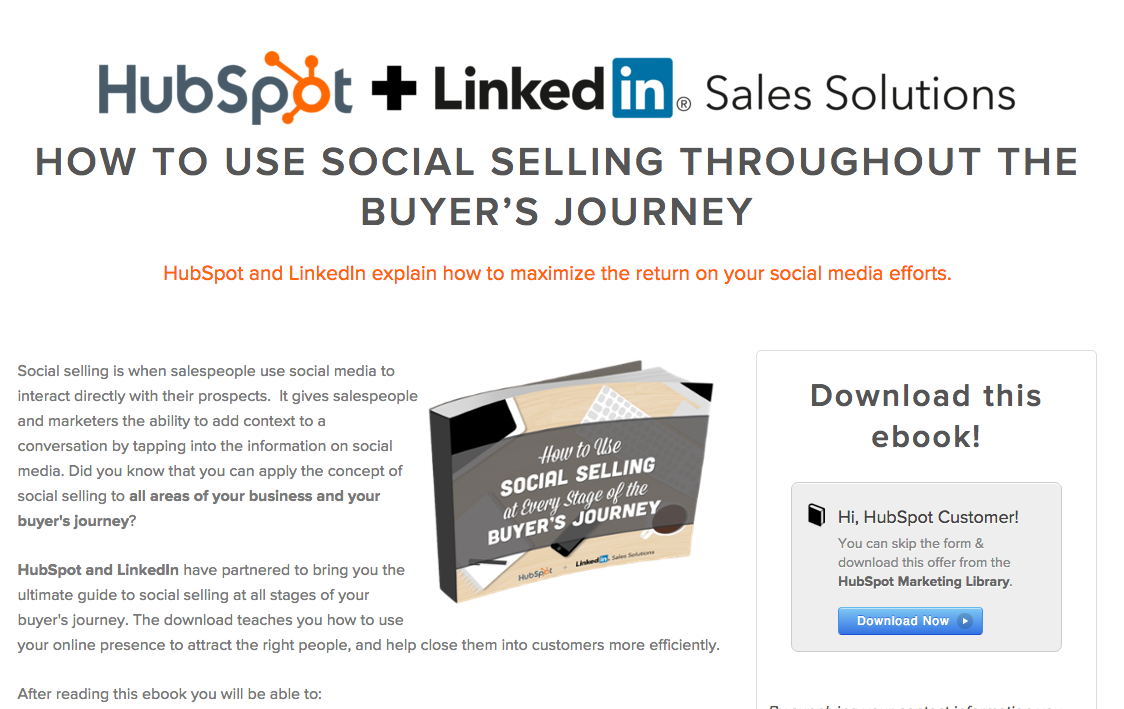An early question in every app development process is “how can we get more coverage out there?”
You’re competing in an intense market and it is challenging to get your product recognized above everything else on offer.
Is there a better way to reach a wider audience?
For some SaaS, co-marketing has provided them with great results. They team up and are able to leverage the audiences and resources that each have for marketing.
Here’s how it works.
What is co-marketing?
First of all, co-marketing usually follows some kind of co-branding effort, where two or more companies have come together to produce a new product or offer. In the SaaS world, you could look at examples such as Hubspot and LinkedIn, who came together by creating complementary services and sales resources to go with them.
This was not Hubspot’s first co-branded effort – they joined with Moz a few years ago to build the hugely popular Inbound.org platform, bringing marketers and inbound enthusiasts together. The result of projects like this is that both brands promote them and are able to leverage each other’s coverage.
That’s where co-marketing comes into the equation.
Co-marketing is where the brands involved in the app/project/resource collaborate on the promotion of their product. Look at the recent Hubspot/LinkedIn collaboration. Both brands are promoting on their own sites and using each other’s branding elements. This is a move which will help to attract followers of each brand. The idea is that when both brands promote the project, they share the results.

Source: Hubspot
Our own experience with co-marketing comes from our Convergely app. Convergely is an add-on tool for Slack or Hipchat, so we worked with both of those brands to promote the app and saw great results, with a lot of new users from each.
What makes this a good strategy?
If we take the example of an app, co-branding and co-marketing would mean that you actively decide to work together from early on. It’s a good strategy when both brands are getting something out of it that they need, such as exposure, thought leadership or being seen as innovators.
Thinking outside of your app product and toward the exposure angle, your partnership may not even be directly about your core product. For example, you might join up with another brand to create and promote an event, splitting the costs (and any profits) of the venture. This is a good way for companies who don’t have the budget of say, Salesforce, to work together to provide value to an audience.
On a smaller scale, you might work together to produce some kind of content. In the image shown in the previous section, you can see that Hubspot and LinkedIn worked together to produce an ebook. When people sign up for the download, they would share the resulting email list.
Yet another angle is where both brands have different, yet complementary products or services which can work well together. A big-brand example can be seen with Apple and Nike who have been working together since the earliest iPods were released. Listening to music while exercising is a perfect fit, as is the more recent technology of fitness tracking, which leverages the capabilities of both brands. The partnership helps them to deliver a better customer experience and reach each other’s audiences.
This raises a good point for what makes co-marketing a good strategy; both partners should have similar goals and audiences that are suitably similar. That’s where the magic happens because both can achieve something that is of value to them.
What should you look for in a partner?
A major factor for the success of any co-branding or co-marketing effort is that both partners must be equally committed to the outcome of the project. Both must be getting some kind of value out of it – generally speaking, if a partnership is more lopsided and not seen as equatable, it’s probably not going to enjoy long-term success.
Secondly, you should share similar goals for what you want out of the partnership. If someone is wanting to grow their leads while the other wants to see their sales boosted, it’s more difficult to develop a project that will serve the needs of both.

Here are some other points we would look out for in a partner.
#1. Does the partnership make sense from a branding perspective?
Would Coke and Herbalife make sense as a partnership? Probably not, because fundamentally, the two of them have a completely different brand premise, voice, and values. While one is entirely focused on the healthy living/healthy bodies market, the other promotes several core products which certainly can’t be called healthy.
Partnerships need to make sense in terms of brand personality and values. A young, vibrant, irreverent kind of voice would seem incongruous partnered with a traditional, serious brand voice. It just wouldn’t make sense to the customers of those brands and in fact, they may lose some as a result, particularly if values don’t tie in. Customers are often drawn to brands who share their own values, so partnering with one seemingly opposite is not a good strategy.
Will your audience resonate with the brand you’re looking to partner with?
#2. Does the target market make sense?
High up your list of priorities should be whether or not the target market of a potential partner is sufficiently similar to your own. There needs to be enough overlap so that you’re reaching the right people.
Partnerships where the customer might use both brand’s products at the same time are definitely strong candidates. For example, think music and coffee shops or fitness (Nike and Apple, Starbucks and Spotify), or weather and beer (essential for growing hops – see the content partnership between The Weather Channel and Goose Island, a brewery).
#3. Look for reach (or expertise)
The most successful partnerships often help each other to access something that they wouldn’t otherwise have. For some brands that might be reach – does the company have considerable clout online? Do they have a large active email list and/or social media following?
It’s not always about the other brand’s reach though, there might be something else they can bring to the table that the partner company doesn’t already have. For example, what if your company has superior app-building skills or some kind of proprietary technology, but doesn’t currently have a large reach? You might partner with someone who has large reach and would like access to your technology.
#4. Look for people you’ll enjoy working with
There are a couple of things about this point; first of all, you’re going to want to work with someone who has credibility and a good reputation so that your own reputation isn’t in any way damaged. That will play a big role in your overall satisfaction and enjoyment!
Secondly, you’re probably going to have more success and be more committed to the relationship if you find people who you enjoy working with. No one likes being forced to work with someone who they otherwise wouldn’t get along with and the chances are neither of you would put in maximum effort if you found it a drag to work together.
Final thoughts
Could co-marketing be a good strategy for your app? It’s definitely worth considering if you can find the right partners who will help your brand to achieve your goals.
A key to remember is that the best co-branding or co-marketing projects happen when each party stands to gain from the deal and reach their goals. Lopsided arrangements will usually end up being reneged on by whoever sees themselves as the lesser party.
Find partners who make sense in terms of their audience, values, and reputation for your brand. It could prove to be a catapult to success for you both.
Koombea builds beautiful apps for brands and their partners. Talk to us today about how we can help you.
